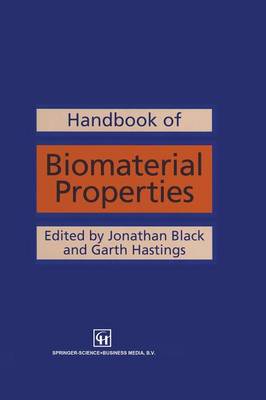(To see other currencies, click on price)
MORE ABOUT THIS BOOK
Main description:
Progress in the development of surgical implant materials has been hindered by the lack of basic information on the nature of the tissues, organs and systems being repaired or replaced. Materials' properties of living systems, whose study has been conducted largely under the rubric of tissue mechanics, has tended to be more descriptive than quantitative. In the early days of the modern surgical implant era, this deficiency was not critical. However, as implants continue to improve and both longer service life and higher reliability are sought, the inability to predict the behavior of implanted manufactured materials has revealed the relative lack of knowledge of the materials properties of the supporting or host system, either in health or disease. Such a situation is unacceptable in more conventional engineering practice: the success of new designs for aeronautical and marine applications depends exquisitely upon a detailed, disciplined and quantitative knowledge of service environments, including the properties of materials which will be encountered and interacted with. Thus the knowledge of the myriad physical properties of ocean ice makes possible the design and development of icebreakers without the need for trial and error. In contrast, the development period for a new surgical implant, incorporating new materials, may well exceed a decade and even then only short term performance predictions can be made.
Contents:
Foreword. Introduction. Contributors. Part I: A1. Cortical bone; J. Currey. A2. Cancellous bone; T.M. Keaveney.. A3. Dentine and enamel; K.E. Healey. B1. Cartilage; J.R. Parsons. B2. Fibrocartilage; V.M. Gharpuray. B3. Ligament, tendon and fascia; S.L.-Y. Woo, R.E. Levine. B4. Skin and muscle; A.F.T. Mak, M. Zhang. B5. Brain tissues; S.S. Margulies, D.F. Meaney. B6. Arteries, veins and lymphatic vessels; X. Deng, R. Guidoin. B7. The intraocular lens; T.V. Chirila. C1. Blood and related fluids; V. Turitto, S.M. Slack. C2. The vitreous humour; T.V. Chirila, Y. Hong. Part II: 1. Metallic biomaterials; J. Breme, V. Biehl. 1a. Stainless steels. 1b. CoCr-based alloys. 1c. Titanium and titanium alloys. 1d. Dental restoration materials. 2. Composite materials; L. Ambrosio, G. Carotenuto, L. Nicolais. 3. Thermoplastic polymers in biomedical applications; S.H. Teoh, Z.G. Tang, G.W. Hastings. 4. Biomedical elastomers; J.W. Boretos, J. Boretos. 5. Oxide bioceramics in medicine and dentistry; J. Li, G.W. Hastings. 6. Properties of bioactive glasses and glass-ceramics; L.L. Hench, T. Kokubo. 7. Wear; M. LaBerge. 8. Degradation/resorption in ceramics in orthopaedics; H. Oonishi, H. Oomamiuda. 9. Corrosion of metallic implants; M.A. Barbosa. 10. Carbons; A.D. Haubold, R.B.More, J.C. Bokros. Part III: 1. General concepts of biocompatibility; D.F. Williams. 2. Soft tissue response; J.M. Anderson. 3. Hard tissue response; T. Albrektsson. 4. Immune response; K. Merritt. 5. Cancer; M. Rock. 6. Blood-material interactions; S.R. Hanson. 7. Soft tissue response to silicones; S.E. Gabriel. Index.
PRODUCT DETAILS
Publisher: Springer (Springer-Verlag New York Inc.)
Publication date: March, 2014
Pages: 590
Weight: 932g
Availability: Available
Subcategories: Biomedical Engineering, Dentistry, Ophthalmology and Optometry, Transplant

